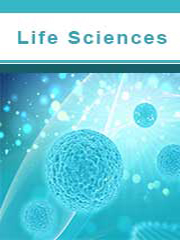Food animal eubiotics is a kind of animal feed additive that used for maintaining optimal balance of microflora (eubiosis) in the gastrointestinal tract. Food animal eubiotics help in proper nutrient absorption required for normal working of the body. It is essential for producing well-nourished animals. Rise in demand for animal protein products, ban on use of antibiotics and increasing living standards are the main driving forces for the growth of food animal eubiotics market.
This report aims to provide a comprehensive presentation of the global market for Food Animal Eubiotics, with both quantitative and qualitative analysis, to help readers develop business/growth strategies, assess the market competitive situation, analyze their position in the current marketplace, and make informed business decisions regarding Food Animal Eubiotics. This report contains market size and forecasts of Food Animal Eubiotics in global, including the following market information:
- Global Food Animal Eubiotics Market Revenue, 2018-2023, 2024-2029, ($ millions)
- Global Food Animal Eubiotics Market Sales, 2018-2023, 2024-2029, (K MT)
- Global top five Food Animal Eubiotics companies in 2022 (%)
The global Food Animal Eubiotics market was valued at US$ 5627.3 million in 2022 and is projected to reach US$ 6995.6 million by 2029, at a CAGR of 3.2% during the forecast period. The influence of COVID-19 and the Russia-Ukraine War were considered while estimating market sizes.
The major players in global Isocyanates market include Royal DSM, BASF, Cargill, etc. The top 3 players occupy about 35% shares of the global market. Europe and North America are main markets, they occupy about 65% of the global market. Probiotics is the main type, with a share about 60%. Swine and Poultry are main applications, which hold a share about 90%.
We surveyed the Food Animal Eubiotics manufacturers, suppliers, distributors and industry experts on this industry, involving the sales, revenue, demand, price change, product type, recent development and plan, industry trends, drivers, challenges, obstacles, and potential risks.
Total Market by Segment:
Global Food Animal Eubiotics Market, by Type, 2018-2023, 2024-2029 ($ Millions) & (K MT)
Global Food Animal Eubiotics Market Segment Percentages, by Type, 2022 (%)
- Probiotics
- Prebiotics
- Organic Acids
- Essential Oils
Global Food Animal Eubiotics Market, by Application, 2018-2023, 2024-2029 ($ Millions) & (K MT)
Global Food Animal Eubiotics Market Segment Percentages, by Application, 2022 (%)
- Swine
- Ruminant
- Poultry
- Aquaculture
- Others
Global Food Animal Eubiotics Market, By Region and Country, 2018-2023, 2024-2029 ($ Millions) & (K MT)
Global Food Animal Eubiotics Market Segment Percentages, By Region and Country, 2022 (%)
- North America
- US
- Canada
- Mexico
- Europe
- Germany
- France
- U.K.
- Italy
- Russia
- Nordic Countries
- Benelux
- Rest of Europe
- Asia
- China
- Japan
- South Korea
- Southeast Asia
- India
- Rest of Asia
- South America
- Brazil
- Argentina
- Rest of South America
- Middle East & Africa
- Turkey
- Israel
- Saudi Arabia
- UAE
- Rest of Middle East & Africa
Competitor Analysis
The report also provides analysis of leading market participants including:
- Key companies Food Animal Eubiotics revenues in global market, 2018-2023 (Estimated), ($ millions)
- Key companies Food Animal Eubiotics revenues share in global market, 2022 (%)
- Key companies Food Animal Eubiotics sales in global market, 2018-2023 (Estimated), (K MT)
- Key companies Food Animal Eubiotics sales share in global market, 2022 (%)
- Further, the report presents profiles of competitors in the market, key players include:
- Royal DSM
- BASF
- Cargill
- Dupont
- Hansen
- Kemin
- Novus International
- ADDCON
- Yara
- Behn Meyer
- Beneo Group
- Qingdao Vland
- Baolai Leelai
- Guangzhou Xipu
- Guangzhou Juntai
- Lucky Yinthai
- Shanghai Zzfeed
- Greencore
- Outline of Major Chapters:
- Chapter 1: Introduces the definition of Food Animal Eubiotics, market overview.
- Chapter 2: Global Food Animal Eubiotics market size in revenue and volume.
- Chapter 3: Detailed analysis of Food Animal Eubiotics manufacturers competitive landscape, price, sales and revenue market share, latest development plan, merger, and acquisition information, etc.
- Chapter 4: Provides the analysis of various market segments by type, covering the market size and development potential of each market segment, to help readers find the blue ocean market in different market segments.
- Chapter 5: Provides the analysis of various market segments by application, covering the market size and development potential of each market segment, to help readers find the blue ocean market in different downstream markets.
- Chapter 6: Sales of Food Animal Eubiotics in regional level and country level. It provides a quantitative analysis of the market size and development potential of each region and its main countries and introduces the market development, future development prospects, market space of each country in the world.
- Chapter 7: Provides profiles of key players, introducing the basic situation of the main companies in the market in detail, including product sales, revenue, price, gross margin, product introduction, recent development, etc.
- Chapter 8: Global Food Animal Eubiotics capacity by region & country.
- Chapter 9: Introduces the market dynamics, latest developments of the market, the driving factors and restrictive factors of the market, the challenges and risks faced by manufacturers in the industry, and the analysis of relevant policies in the industry.
- Chapter 10: Analysis of industrial chain, including the upstream and downstream of the industry.
- Chapter 11: The main points and conclusions of the report.
